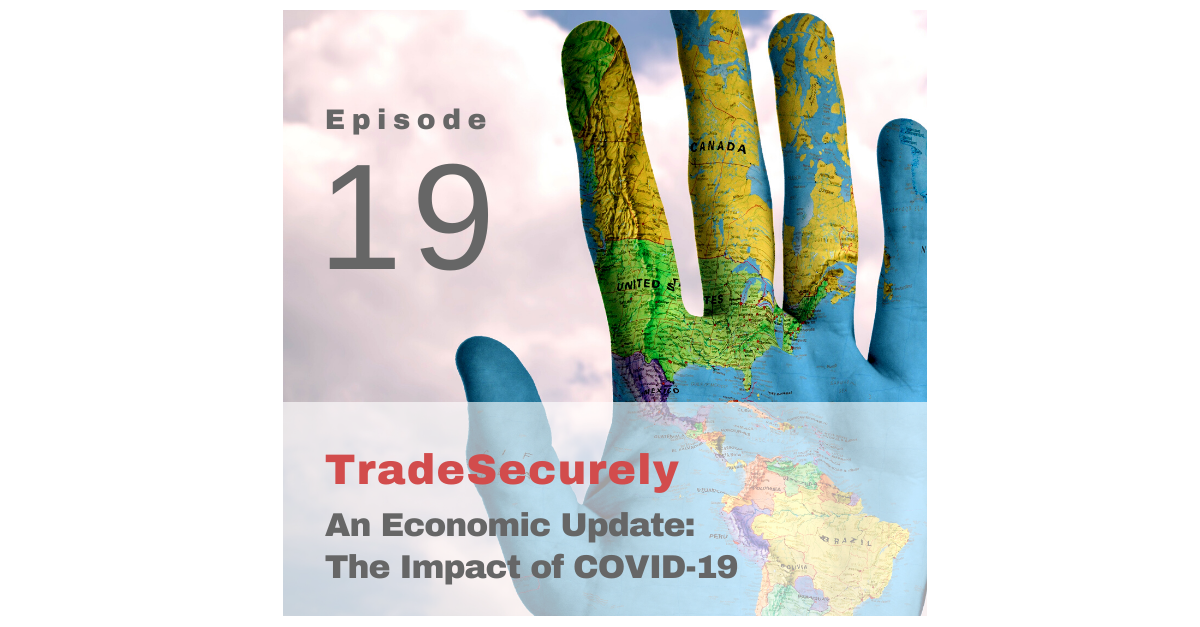Episode Transcript
[00:00:00] Speaker A: You.
On June 19, 2023, wallace and Carrie, a well known distribution and logistics company located in western Canada, filed for CCAA protection after over 100 years in business, and their creditors were taken by surprise. So what went wrong? Welcome to the Trade Securities Podcast, brought to you by the Receivables and association of Canada, or, as we'd like to call us, React. Today's show is the first in a series called from the Trenches, where our members share real life stories about how trade credit insurance, receivables insurance protects Canadian businesses from unforeseen risk. I'm Janet Eastman, and today I welcome two guests from Kofast, Canada. Jackie Juice is country manager and chief agent for the company, and Zach Spencer is vice president and head of Risk Underwriting. So welcome to you both.
[00:00:53] Speaker B: Thank you.
[00:00:54] Speaker A: So I wanted to provide a little bit more background for listeners on this bankruptcy of Wallace and Carrie, because the company started back in 1921, which is over 100 years ago, grew across Canada and have several locations. It served more than 7000 customer locations, which included many independent businesses, some of the largest retail and theater chains as well. So on the surface, the company looked really solid. But, Zach, when you looked at this risk on behalf of Kofast clients, what's the first red flag that got your attention?
[00:01:27] Speaker C: Well, like you said, we reviewed the overall portfolio, and then after a certain point, we decided to reach out to the company to source financial information.
After several attempts and the company's unwillingness to share information, we had a little bit of concern that we weren't able to, despite having a specific contact to reach.
Once a company doesn't want to utilize transparency or share transparency with us, sometimes it raises a red flag of, is it a company preference or there's something more that we need to look into? That was our first red flag.
[00:02:05] Speaker A: Okay, so what other issues did you see as you looked closer at the company?
[00:02:10] Speaker C: It was difficult to say because as you mentioned in our assessment, there weren't too many flags that were outstanding. You mentioned it's 100 year old company, there were 7000 customer locations, large retail chains. There was theater chains, reasonable information from the credit reports, and 650 employees.
The only evident concern was the group's concentration in sales in the movie theaters, which suffered pretty substantially throughout the pandemic. And for us, we also didn't know what that concentration of how much of sales that actually was. So for us, we had to estimate our position as a whole and take the appropriate actions accordingly.
[00:02:57] Speaker A: Okay, so what coverage solution could you end up providing to this customer?
[00:03:03] Speaker C: Unfortunately, our coverage position was restrictive, again, due to the transparency and the perception. Based on the factors that I mentioned, we had to have some difficult conversations with our policyholders and share the information of what our perception was from an objective view versus what they may have experienced on a day to day basis.
[00:03:25] Speaker A: Okay, so, Jackie, no doubt some of your Cofast clients have been doing business with Wallace and Carrie for years, and they're probably thinking the company's 100 years old. Come on, what's the problem here? So how did they react to the suggestion that there was a problem in the company and that you needed to limit exposure?
[00:03:43] Speaker B: The end of the day, the reaction wasn't too severe from our clients. And I think what Coffas does well, as Zach said, is we have those discussions with our clients, so very open communication from both the risk underwriting team and the key account management team to explain the positions, explain where we're seeing the concerns, and share that information with our clients. So really, that open, transparent communication assisted us with that message to the market.
[00:04:13] Speaker A: And so in the end, Jackie, how were Kofas clients impacted from the fallout of this bankruptcy as compared to, say, other suppliers of Wallace and Carry?
[00:04:23] Speaker B: See, that is the benefit of a credit insurance policy is know the clients that had credit limits in place were able to submit their claims, have the amount outstanding to them paid back by corfus, which then protected their cash flow and they were able to continue with their business and focus on their own business rather than worrying about the outstanding amount. So I think just the support in terms of cash flow was really good for clients who had cover in place.
[00:04:53] Speaker A: Okay, and what's the key takeaway here? The lesson learned from all of this that you would like to share with people who look at maybe a credit insurance policy and aren't really sure about whether or not this is something that they should do.
[00:05:09] Speaker B: I think for me, in the ever increasing risk environment and we're seeing geopolitical tensions, increasing risk environment in North America, I think trade credit insurance is definitely a product that can assist companies in assessing their risk on the book. And as we can see with this example, whether you've been in business 100 years or not, or whether the perception that that company is strong is sometimes inaccurate. And I think it's really good to have a partner to walk that road with you and to provide that information in order to protect your biggest asset, which is your debtors book at the end of the day.
[00:05:46] Speaker A: Okay, zach, do you have any final comments on this story and some of the things that you've seen out there in the industry?
[00:05:54] Speaker C: Sure, yeah. As a whole, it's quite unique. When the business who's been around for 100 years files for bankruptcy, it's gone through a lot of economic cycles, has been able to wither multiple storms. So when it finally catches up, it's quite notable in the market.
I think right now, as Jackie mentioned, there's a lot of geopolitical tension that's out there. There's definitely concerns, especially in Canada, with a lot of leverage on consumers. Everybody seems to be predicting a negative turn in the economy. So with this dynamic environment that's showing a negative trend, I think a lot of business models that might be antiquated or haven't adapted to the current environment may be under pressure and may create some unintended consequences for businesses and their suppliers. We've seen this a couple of times in the likes of Nordstrom who decided to divest their Canadian business. Lowe's did that with Rona. However that was a little bit more beneficial when it was through private equity. So the company is still operating but even last week we've seen a number of publicly traded companies go bankrupt, one of which was Map Beauty. We had Bad Boy Furniture which is a well known brand which went into creditor protection. So we are starting to see some of the bigger companies who have been established who may not have either adapted or maybe in more sensitive sectors.
We need to have companies focus on understanding the full risk pattern and the risk concerns that may come around companies and we can't just rely on the fact that they have a strong reputation. There is information that we do possess that is a little bit more comprehensive than what some of our policyholders may have and vice versa. So this is where that collaboration and partnership comes in to make sure that we provide risk mitigation. And when companies do try to increase their revenue and their growth, we help them, protect them and allow them to have the right information so that they can both grow successfully and mitigate any downside.
[00:08:02] Speaker A: I guess in the end it just comes down to knowledge is power right? If you know something that most people don't know, you can protect yourself and be in a better position. I really appreciate both of you sharing this story with us because I think people have to understand the power of trade credit insurance and it's these kind of stories that really paint that picture for people very clearly. So I appreciate your time. Thank you happy to be here. So from Kofast, Canada. My guests were Jackie Juice, she's country manager and chief agent. And Zach Spencer is vice president and head of risk underwriting. And we will have more stories from the trenches on the trade security podcast. So watch out for them. On our website at Receivable, ##insurancecanada, com and follow us on LinkedIn and on X or Twitter to stay up to date on Trade Credit Insurance information. I'm Janet Eastman. Thanks for listening.


